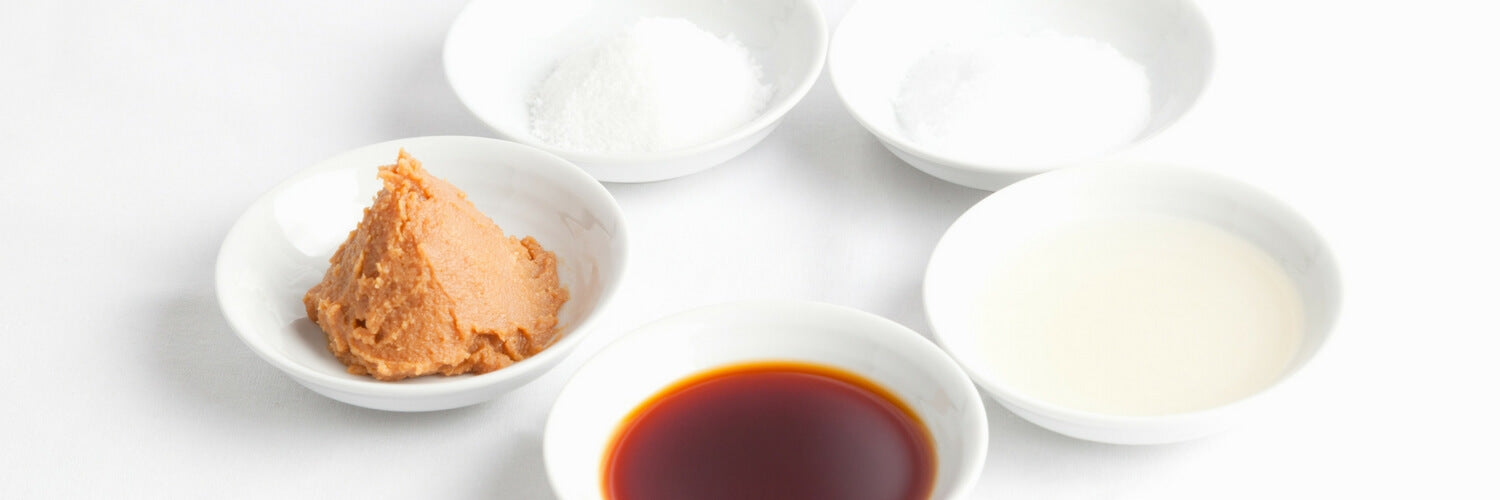
Japanese Cooking 101, Kitchen Secrets
Sa-Shi-Su-Se-So: The Secret of Japanese Cooking Basics
3 minutes
Making authentic, tasty Japanese food in the comfort of your own home is a breeze if you just remember your ABCs! By using the elements of sa-shi-su-se-so in order, you'll be on your way to recreating these trademark Japanese flavors in no time.
Have you ever wished there was a secret formula to making great-tasting Japanese cuisine (also known as washoku) in the comfort of your own kitchen? Well, wish no more. By following the basic principles of Japanese cooking detailed below, it’s easier than ever to create authentic, delicious Japanese flavors at home.
What Is Sa-Shi-Su-Se-So?
Similar to the English idea of “A, B, C, D, E,” sa-shi-su-se-so is the building block of any Japanese meal. In other words, the “ABCs” of Japanese cooking. Each letter stands for one hallmark of the cuisine:
- Sa = satoh = sugar
- Shi = shio = salt
- Su = su = rice vinegar
- Se = shoyu = soy sauce
- So = miso = fermented bean paste
By paying close attention to these seasonings, any home chef should be able to add some Japanese flair to their cooking. Of course, you don’t need to use all five in every Japanese dish you make — but at least three can add a great ethnic edge to your cooking!
Why Is the Order Important?
The rule of thumb is to add these ingredients in their precise order (sa-shi-su-se-so) to optimize their flavors. This is because certain seasonings don’t blend as well if they aren’t added correctly; for example, adding sugar after soy sauce will cause the sweetness to be overshadowed by the saltiness of the sauce. Those ingredients that are more vulnerable to changing from heat are added last, so they retain their original flavors. In addition to this, the final two ingredients — soy sauce and miso — also add a pleasant aroma to the dish, which is one reason you would want to wait until the end to add them.
What About Sake, Dashi and Kombu?
Of course, adding sake or mirin to Japanese cooking is a long-standing tradition in the culture of washoku. Because of its gentle, subtly sweet flavor, it is recommended that you add sake to the dish first. This will ensure that the flavor doesn’t need to work its way through the saltiness of soy sauce, and also provide a tasty simmer sauce. However, if you are using mirin, which is a lower-alcohol condiment, you can add it last.
Another popular seasoning used in Japanese cooking is dashi, a stock — either liquid or powdered — that adds a distinct umami flavor to dishes. Similar to sake, which can be used as a simmering sauce, dashi is one of the first ingredients to add. This way, your dish can start to soak up some of these rich, savory flavors before adding your sa-shi-su-se-so ingredients.
Typical dashi is made from kombu, a kind of dried kelp or seaweed. Kombu can be an ingredient in its own right, adding similar savory or umami flavors to dishes. Kombu can be used to make a broth or to flavor and break down the enzymes in dried beans. It also adds some great vitamins and minerals. Because it is typically a base, you’ll want to add kombu early in the process.
